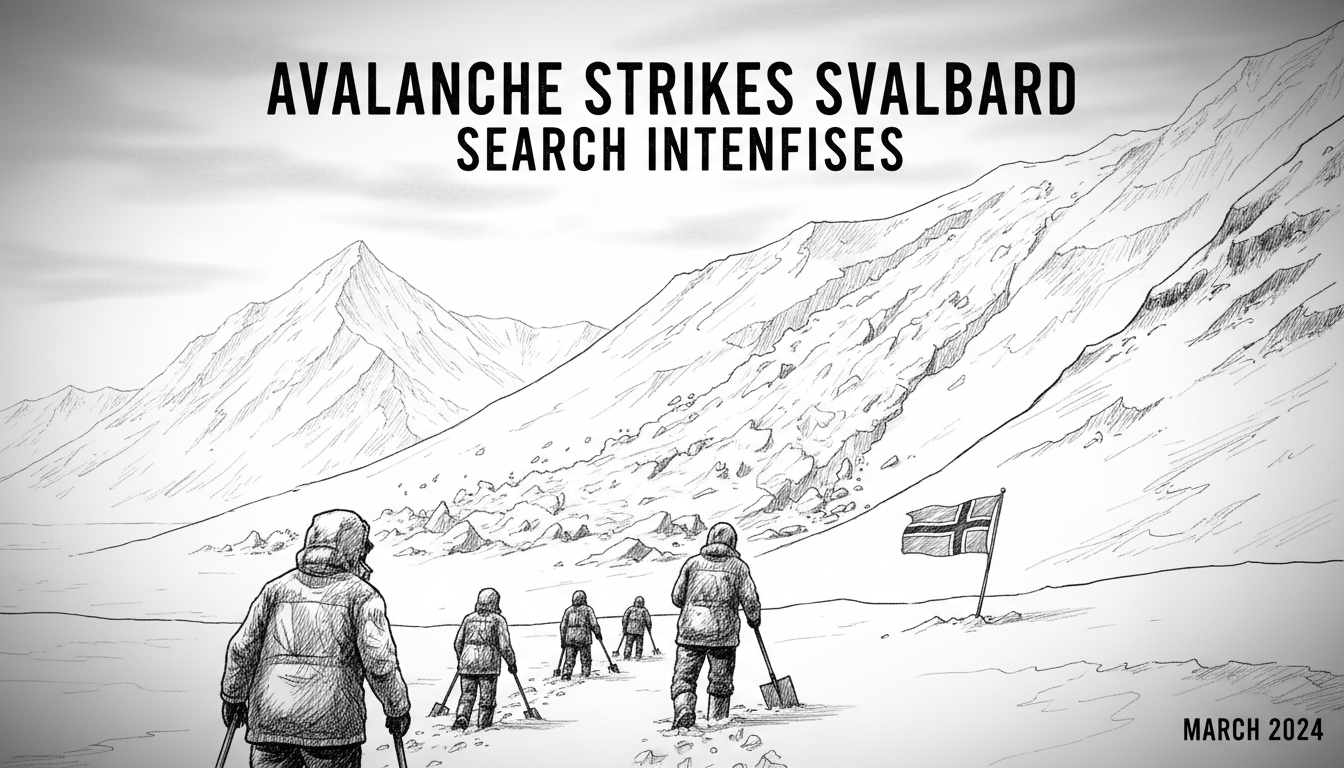Norwegian authorities have launched an urgent search operation following an avalanche near Longyearbyen on Svalbard. The avalanche occurred in Tverrdalen valley near Longyearbreen glacier, just outside the main settlement. Police confirm they have contacted tour groups on both sides of the avalanche zone but have received no missing persons reports at this time.
The operations leader stated they cannot confirm whether anyone was caught in the snowslide. Local officials observed tracks on both sides of the avalanche path, raising concerns about potential backcountry travelers. The Svalbard governor's office is coordinating with search teams as the operation continues.
This incident highlights the persistent avalanche risks in Svalbard's Arctic environment. The archipelago experiences regular snowslides, particularly during winter months when tourism increases. Svalbard's unique geography creates complex avalanche conditions that challenge even experienced polar travelers.
International visitors should understand that Svalbard operates under Norway's strict safety regulations for Arctic tourism. All travelers venturing outside Longyearbyen must carry appropriate safety equipment and file travel plans with local authorities. The governor's office maintains tight control over backcountry activities to prevent tragedies.
The current search operation demonstrates Svalbard's emergency response capabilities in extreme conditions. Rescue teams face challenging Arctic weather and limited daylight during the polar night season. Their response time and coordination often determine survival outcomes in such incidents.
This avalanche comes during a period of increased adventure tourism to Norway's Arctic regions. More travelers are seeking polar experiences, sometimes underestimating the harsh conditions. Local guides consistently emphasize that Svalbard's wilderness demands respect and preparation.
The absence of confirmed missing persons provides some hope, but search teams continue their work methodically. Avalanche safety experts note that quick response remains critical for survival in snow burial situations. The remote location complicates rescue efforts, requiring specialized equipment and trained personnel.
Norwegian avalanche safety standards rank among the world's most comprehensive, yet Svalbard's unique conditions present constant challenges. Climate change has introduced new variables to avalanche forecasting in the High Arctic. Researchers have documented changing snowpack conditions across Svalbard's mountainous terrain.
For now, families and tour operators await updates from the search teams. The international community watches closely, recognizing that Svalbard represents both Arctic adventure and very real danger. The outcome of this search will influence future safety protocols across Norway's northern territories.

